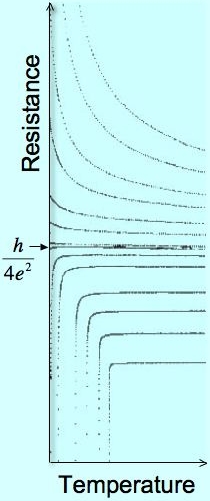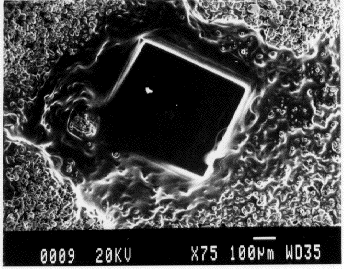PHYS 408: Statistical Physics
Instructor:|
|
Gabe Spalding CNS room C006B |
Outline: (Tentative Schedule is included below; it will be updated)
CNS room E108, TR, 1:10 - 2:25 pm
Primary Texts:
An Introduction to Thermal Physics, by Daniel V. Schroeder, now published by Oxford University Press. Ebook versions are available from eBooks.com and Amazon. (See the author's website)
Thermal Physics, by Ralph Baierlein, published by Cambridge University Press, (ISBN 9780521658386)
Additional References Include:
Understanding the Properties of Matter, by Michael de Podesta (openly available online)
Your texts from Intro. Physics and Physics III (or equivalent)
Mathematica will be used on a semi-regular basis in homework assignments; however, no previous Mathematica experience will be required.
While
the primary texts supply us with a reliable structure for the course (i.e.,
we will follow them closely), it is my hope that we will all work together to
enhance what these primary references present, with the goal of helping one
another identify and develop personal interests. Please come to the course
meetings prepared for lively discussion.
The Big Picture:
- Among other topics, Statistical Physics deals with
phase transitions between myriad states of matter (e.g., from a
paramagnetic state to a ferromagnetic state), and the associated
spontaneous symmetry breaking, pattern formation, topological defects,
fluctuations, as well as transport problems, etc.
- As a first step, we must discuss the very concept of
temperature. The range of temperatures studied by physicists is enormous, and every
decade of change in temperature brings entirely new types of phenomena.
This is a course that will introduce central principles underlying the
rich (and at times surprising) array of thermodynamic properties
found in large collections of atoms and molecules, which is to say,
systems with many "degrees of freedom. " One of the beautiful
surprises is the simplicity of the collective behavior which emerges
in these enormously complex systems.

- The graphic above illustrates a
Superconducting-Insulating Transition observed in ultra-thin
samples by the Allen Goldman group at the University of Minnesota, in
which tuning parameters such as sample thickness, disorder introduced into
the sample, and magnetic field determine the quantum ground state of the
system. As any given sample is cooled towards absolute zero temperature,
its resistance either moves towards zero or towards infinity (rather
dramatically, as the data shown is plotted on a logarithmic scale),
with an unstable fixed point at the "quantum resistance for
pairs." This is an example of a many-body collective transition, not
from a "normal" metal into a superconductor, but from the
superconducting state into a very unusual insulating state which is,
itself, determined by very rich collective behaviors. In general, as a
system approaches a phase transition, there is a great richness to be
found in studies of the correlations and of the fluctuations within
the system as it moves from one state to another (i.e.,
"critical behavior").
- Active research is being done on fluctuation theorems
(both theoretically and experimentally). These theorems have great general
importance, and include extension of the Second Law of Thermodynamics into
the realm of micro-machines and biomolecules. Clearly such work opens up
vast new intellectual opportunities.

- In such studies, we ask, "How does order
emerge from chaos and disorder?" It is notable that the fundamental
paradigms of spontaneous, symmetry-breaking critical behavior are relevant
to an extraordinarily wide range of studies: in many situations, the
specific details of the underlying interactions cease to be of
importance in what emerges. -- You may wish to read Tom Kibble's Physics Today
article, which begins: "Topological defects, such as vortices and
flux tubes, that arise during phase transitions in condensed-matter
systems can serve as models for a far more elusive defect-cosmic strings
formed in the early universe."
#1 Requirement: Keep up with the reading
Complete the Reading for each Chapter before discussion begins in class
To each class meeting, you are expected to bring a "status sheet". This is simply a list of (three or so) questions you have regarding the material to be covered in class. I want you to really analyze whether or not you understand the reading. The depth of your considerations, as reflected in your status sheets and in your classroom participation, will account for 10% of your final course grade.
If the material in your primary text is not clear at any point, it is your responsibility to seek out clarifying materials (primarily from your Intro Physics text) and to share insights with the rest of the class during our meetings.
Grading:
- Piazza
Posts, Preparation, & Participation........10%
- Homework.........................................................10%
- In-Term Tests
................................................65% (total)
- Final Exam .......................................................15%
Tentative
Version of the Schedule:
|
Problems of the Week |
|
||||||||||
|
HW Set#1 Due W: 1.7(a), 1.8, 1.16; |
|
Review the Appendix in Thornton & Rex on
"Mean Values and Distributions" (and find the typo), and at least look through the Math Appendix in
DS. |
|||||||||
|
Ch 2: |
|
Of "Super-Soakers"
and Heat Engines |
|||||||||
|
HW Set# 7 Due W: DS # 2.33, 2.35, 2.37, |
|
||||||||||
|
HW Set# 10 Due W: DS # 3.24 |
|
||||||||||
|
HW Set# 13 Due W: Catch up! |
|
||||||||||
|
HW Set# 16 Due W: DS # 4.16, 4.17 |
|
Review
text regarding: |
|||||||||
|
HW Set# 19 Due W: DS # 5.15, 5.46 |
|
||||||||||
|
HW Set# 22 Due W: DS # 5.62 |
|
||||||||||
|
HW Set# 25 Due W: DS # 6.16; |
|
Modern extensions of the Second Law: |
|||||||||
|
HW Set# 28 Due W: DS # 6.47 |
|
||||||||||
|
None |
|
None |
|||||||||
|
HW Set# 31 Due W: B # 9.1, 9.20 |
|
Just READ each of the problems |
|||||||||
|
HW Set# 34 Due W: DS # 7.35 |
|
||||||||||
|
HW Set# 37 Due W: Review! |
|
||||||||||
|
HW Set# 40 Due W: DS # 7.70 |
|
FINAL EXAMINATION: Comprehensive,
covering from the Big Bang onwards (Friday, April 22, 10:15AM-12:15PM)
